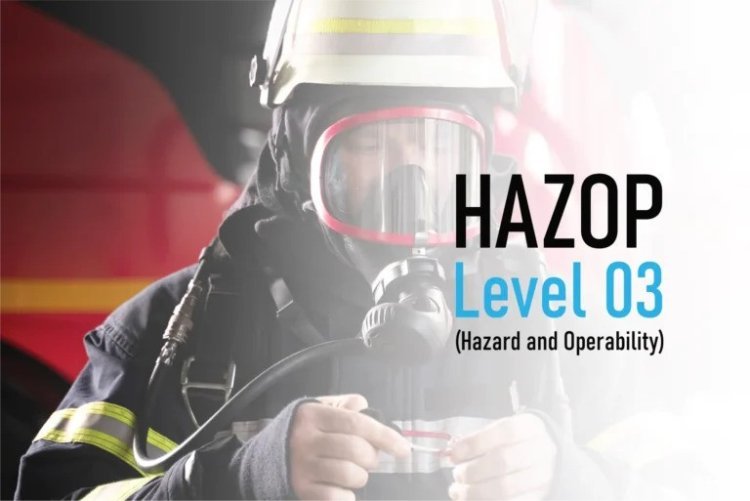Case Studies in HAZOP Learning from Real-World Risk Assessments
HAZOP is vital for identifying risks in industries handling hazardous materials. IACP certifications equip professionals with essential skills for effective risk assessment.

In industries where hazardous materials and processes are involved, ensuring safety is paramount. Hazard and Operability (HAZOP) studies serve as a structured approach to identifying potential risks before they escalate into serious incidents. The IACP has been at the forefront of providing safety certifications that equip professionals with the expertise to conduct thorough HAZOP analysis.
The International Association of Certified Professionals offers specialized training in risk assessment, ensuring that professionals understand the intricacies of hazard identification. This article explores real-world case studies of HAZOP implementation, illustrating its impact on workplace safety.
Understanding HAZOP
HAZOP is a systematic method used to examine processes and identify potential hazards. By assessing deviations from normal operations, safety professionals can mitigate risks effectively. Organizations that implement HAZOP as part of their risk assessment strategy can prevent catastrophic accidents and enhance workplace safety.
The Importance of HAZOP Training
A well-trained workforce is essential for effective hazard identification and risk mitigation. The IACP provides certifications that empower professionals to conduct comprehensive HAZOP studies. The International Association of Certified Professionals ensures that individuals receive in-depth knowledge of hazard analysis techniques and industry best practices.
Real-World Case Studies in HAZOP
1. HAZOP in Chemical Processing Plants
Chemical industries handle hazardous substances that pose significant risks. A multinational chemical company implemented a HAZOP study to assess the safety of its production process.
1.1 Problem Identification
- Frequent leaks were detected in a specific production unit.
- Previous safety audits had failed to identify the root cause.
1.2 HAZOP Approach
- A team of safety engineers, trained under IACP certification, analyzed process deviations.
- They used guidewords such as "more flow," "less pressure," and "reverse reaction" to identify anomalies.
1.3 Findings and Solutions
- The study revealed that a defective pressure relief valve was causing uncontrolled chemical releases.
- The company implemented a stricter maintenance schedule and installed additional monitoring systems.
2. HAZOP in Oil and Gas Industry
Oil refineries are high-risk environments requiring robust hazard assessment methodologies. A leading refinery conducted a HAZOP analysis to prevent potential explosions.
2.1 Problem Identification
- Rising pressure levels in storage tanks posed an explosion risk.
- Operators lacked adequate training in early hazard detection.
2.2 HAZOP Approach
- A certified team from the International Association of Certified Professionals reviewed operational deviations.
- They simulated various failure scenarios to predict possible outcomes.
2.3 Findings and Solutions
- The study identified a malfunctioning temperature gauge that contributed to excess pressure buildup.
- Corrective actions included enhanced employee training and improved equipment monitoring.
3. HAZOP in Pharmaceutical Manufacturing
The pharmaceutical industry requires precise process control to ensure product quality and safety. A leading manufacturer applied HAZOP to enhance its quality assurance processes.
3.1 Problem Identification
- Inconsistent drug compositions were observed in production batches.
- Regulatory authorities raised concerns about quality deviations.
3.2 HAZOP Approach
- A team of experts, trained under IACP certification, analyzed production inconsistencies.
- The study employed process deviation analysis to identify root causes.
3.3 Findings and Solutions
- The study found that an irregular mixing speed caused inconsistencies.
- The company upgraded its automation system and retrained staff to adhere to standardized protocols.
Key Takeaways from HAZOP Case Studies
1. Proactive Risk Identification
Organizations that integrate HAZOP into their risk assessment framework can detect hazards before incidents occur.
2. Enhanced Workforce Competency
Training through the International Association of Certified Professionals ensures that employees have the necessary skills to perform accurate hazard assessments.
3. Regulatory Compliance
Many industries are required to conduct HAZOP studies to comply with safety regulations. Implementing these practices minimizes legal risks.
4. Continuous Improvement
Regular HAZOP reviews help organizations adapt to emerging risks and maintain high safety standards.
Conclusion
HAZOP plays a crucial role in identifying risks across various industries. The IACP provides industry-leading certifications that equip professionals with the skills needed to conduct effective HAZOP studies. By learning from real-world case studies, organizations can enhance safety, ensure regulatory compliance, and protect their workforce. Enrolling in specialized courses from the International Association of Certified Professionals is a step towards mastering HAZOP methodologies and fostering a safer work environment.
What's Your Reaction?













